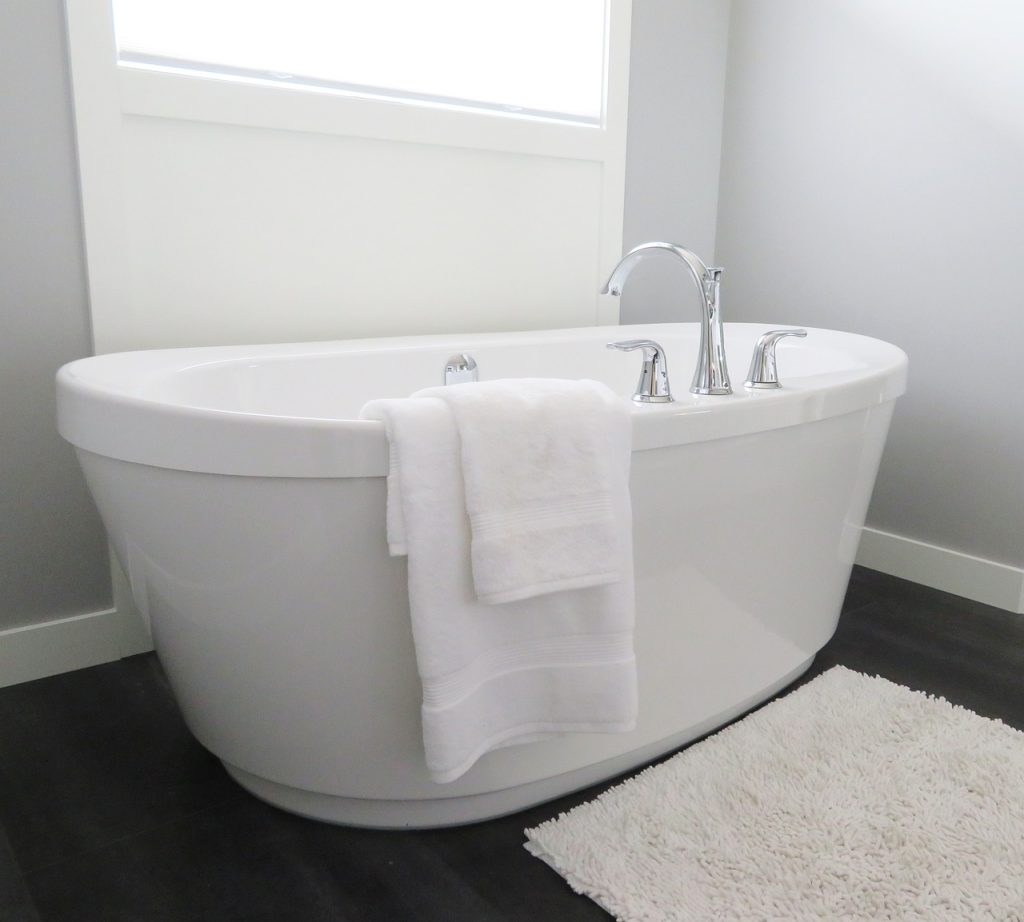Bathrooms are often overlooked when it comes to home safety, yet they pose significant risks for accidents, particularly in the shower or bathtub. For families with both young children and older adults at home, taking proactive steps to ensure bathroom safety can prevent slips, falls, and other mishaps. This guide offers practical tips to keep everyone safe—whether they’re just learning to walk or enjoying their golden years.
- Install Non-Slip Surfaces
The most common hazard in showers and bathtubs is slipping. For both children and seniors, adding non-slip mats or adhesive strips to the floor of the shower or tub can provide extra grip. These surfaces are especially crucial when the floor gets wet, which often leads to accidents. Look for products that cover a large area and have strong adhesion to prevent them from shifting.
Tip for Toddlers:
Choose non-slip mats with fun designs to make bath time more enjoyable while ensuring their safety.
Tip for Seniors:
Ensure the non-slip mats or strips are large enough to cover the entire area where they will stand or sit.
- Use Grab Bars for Support
Grab bars aren’t just for older adults—they’re a great support system for anyone with balance concerns. Whether you’re dealing with an aging parent or a toddler who’s still finding their balance, strategically placed grab bars can provide much-needed stability.
Installation Tip:
Install grab bars near the entrance of the shower, beside the bathtub, and along any walls that might be leaned on for support. Make sure they are securely attached to the wall to support full body weight.
- Consider Using a Shower Chair
Shower chairs or benches offer both comfort and safety, especially for seniors or anyone recovering from an injury. For little ones, a baby bath seat can help keep them steady while you wash them. These chairs reduce the need to stand and help avoid slips due to balance loss or fatigue.
Pro Tip:
Ensure the shower chair has non-slip rubber tips at the legs, and choose one with armrests for added support when sitting or standing up.
- Adjust the Water Temperature
For both children and older adults, scalding is a real danger. Set the water heater to a safe temperature—no higher than 120°F (49°C)—to reduce the risk of burns. Installing an anti-scald device on faucets is another layer of protection, as it regulates the temperature to prevent sudden hot water surges.
Safety Tip for Children:
Teach kids about the difference between the hot and cold water handles. Make sure they always turn on the cold water first, then adjust it to warm.
Safety Tip for Seniors:
Consider installing easy-to-grip, lever-style faucets, which are simpler for those with arthritis or limited mobility to use.
- Supervise Little Ones at All Times
Children can drown in as little as one inch of water, so never leave a child unattended in the bathtub or shower, not even for a moment. Even with safety equipment in place, young children require constant supervision while bathing.
Safety Routine:
Prepare everything you’ll need—towels, soap, shampoo—before starting the bath to avoid stepping away mid-bath.
- Install a Hand-Held Showerhead
Hand-held showerheads are great for both kids and seniors, allowing for better control during bathing. They make it easier to rinse off soap and shampoo without needing to stand under a fixed stream of water. For seniors, this minimizes the risk of leaning or slipping while reaching overhead.
Installation Tip:
Install the showerhead at a lower height or use one with an adjustable holder so everyone in the home, from kids to adults, can easily access it.
- Ensure Proper Lighting
Slips and falls are often caused by poor visibility. Make sure your bathroom is well-lit, especially for evening or early morning baths. Consider adding a nightlight in the bathroom to ensure older adults or children can safely navigate at night.
Lighting Tip:
Opt for soft, bright LED lighting that eliminates shadows but isn’t too harsh on sensitive eyes.
- Use a Bath Thermometer for Young Kids
Babies and toddlers have more sensitive skin than adults. Using a bath thermometer can ensure the water is at a safe and comfortable temperature for them. Aim for bathwater that is between 98.6°F (37°C) and 100°F (38°C).
Fun Tip:
Thermometers that double as bath toys can make this safety step easy and fun for your little one.
- Consider Walk-In Tubs or Low-Step Showers
For seniors, walk-in tubs and low-step showers can significantly reduce the risk of tripping while getting in and out of the bathtub. These are designed with doors that open, allowing the user to step in without having to climb over a high tub edge.
Bonus Safety Features:
Many walk-in tubs come with built-in seating, anti-slip floors, and grab bars, offering extra security.
- Dry the Floor Immediately
Water inevitably spills out of the tub or shower, making bathroom floors a slip hazard. Keep a towel or bath mat on hand to dry the floor immediately after use. For older adults, consider a mat with rubber backing that won’t slide around.
Kid-Friendly Tip:
Get kids involved in drying up! It can be a fun way to teach responsibility while ensuring their safety.
Conclusion
Shower and bathtub safety is a priority for both the youngest and oldest members of your household. With these practical tips, you can make the bathroom a safer place without compromising comfort or enjoyment. Whether it’s through simple modifications like adding non-slip mats or more significant changes like installing grab bars or walk-in tubs, proactive measures can help prevent accidents and ensure everyone enjoys their bath time safely.
By taking these steps, you’ll be able to create a bathroom environment that’s safer for all ages—one where you can relax knowing your loved ones are secure.

